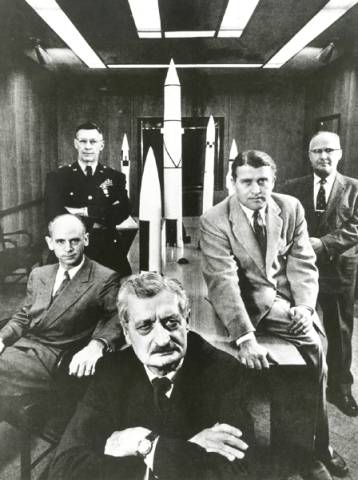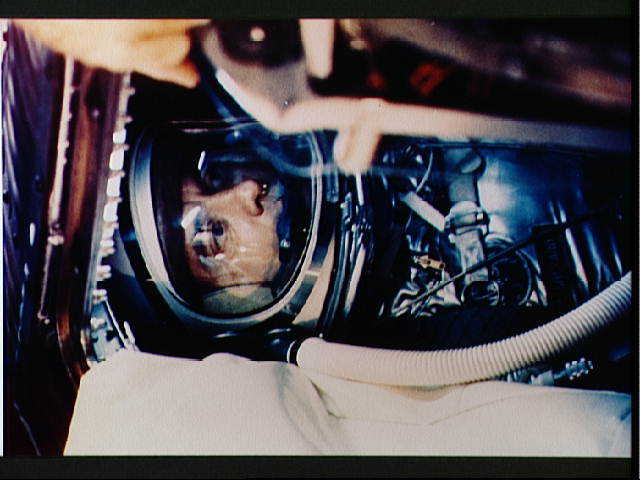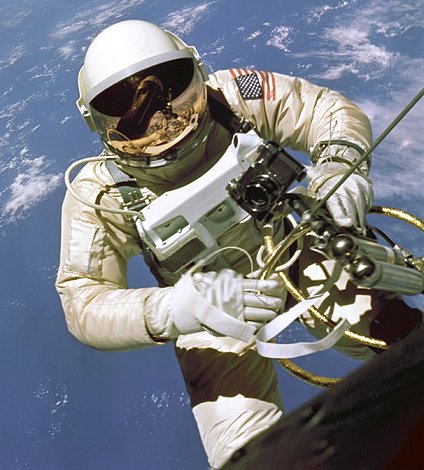" Race Into Space" AAR [RESUMED!]
Posted: Sun Aug 21, 2005 1:49 pm
For All Mankind
On the cold afternoon of March 16, 1926, on his Aunt Effie's farm in Auburn Massachusetts, a determinedly private and reserved physics professor named Robert Goddard had the "Kitty Hawk" moment for future space travel.

Only 6 years removed from the publication of his landmark treatise "A Method Of Reaching Extreme Altitudes", Goddard planned to launch a small rocket into the air in private, with only his wife present and filming the occasion. Already a painfully shy and reserved man, Goddard had filled "Extreme Altitudes" with page after page of brilliant applied physics, putting concrete numbers to abstract theory. The work was so detailed on rocket physics that the former Clark College professor had diagrams showing exact diameters of thruster housings and fuel boosters. As an afterthought, Goddard (who like so many scientists of the time studying rockets and space, had been influenced by the science fiction of Jules Verne and HG Wells) opined that with a liquid- and solid-fuel powered thrust, a rocket could be sent out of the earth's atmosphere and continue on it's way into "infinite space". In a brief throwaway line, he mentioned that flash powder could theoretically be packed into a payload area on such a rocket, that rocket could be aimed at the moon, and then astronomers could observe the impact via telescope on earth.
Predictably, the public cared not a whit about the 68 pages of brilliant rocket physics contained in Goddard's article, instead focusing on that one part he'd included as a throwaway illustration regarding hitting the moon with a rocket. He became notorious as the "Moon-Rocket Man", much to his mortification. The notion was ridiculed and dismissed by other scientists and editorial writers, and Goddard, now something of a laughingstock, fled to New Mexico to continue his work in peace, quiet, and most of all, private.

In the ensuing years between 1920 and '26, if he was remembered at all, it was through terse dismissal by the scientific "space societies" that had sprung up in France, Austria, Germany, and the Soviet Union. Goddard was a "theorist" they sneered, and not much of one at that.
On that cold afternoon in 1926, the "theorist" was about to do something no one else in the world had done before. The rocket he planned to launch was a liquid-fueled contraption built on a skeletal frame to reduce weight considerations. It fed a mix of oxygen and gasoline into a 2-stage booster, and if it flew at all would represent the first liquid-fueled multi-stage rocket ever successfully launched.
In Goddard's own diary he noted that upon ignition, the little 10-pound rocket "did not rise at first" but that flames came out and there "was a steady roar". After a few seconds, the rocket did finally lift clear of it's frame and roar off "at express train speed" before rolling to the left and crashing to earth at great speed. Goddard described it by saying it was as if the rocket was saying "I've been here long enough; I believe I'll get the hell out of here!" (Goddard later cleaned this up for posterity, but his wife and assistants remember that phrasing from the actual launch day.) The little rocket reached an altitude of only 41 feet, and stayed aloft for only 2.5 seconds...but it had worked.

By World War II, rockets were being flown to altitudes many miles in the sky, over great, great distances. A team of German Rocket scientists, spearheaded by Werner Von Braun, brought terror to the British mainland with their V-2 rockets in the late stages of the war. After the war, both the Soviets and Americans pressed captured German rocket scientists into service, recognizing the enormous political capital and military application of their work.
By 1953, the CIA was reporting "indicators" that suggested the USSR was planning on exploring outer space as soon as practicable. In 1955, a Soviet newspaper announced that the USSR planned to launch a "spacecraft" within 2 years.
Now more CIA information is coming in. It is clear that the Russians intend to launch a "satellite" or artificial man-made moon into earth orbit within the next year or two. While a similar operation has been the stated goal of the United States for nearly three years, disastrous rocket tests using Redstone and Vanguard rockets have stalled development.
There are also conflicting CIA reports that the Soviet Union may be on the verge of instituting a manned spacecraft program.
The race into space is on! The game has begun and the clock is ticking
On the cold afternoon of March 16, 1926, on his Aunt Effie's farm in Auburn Massachusetts, a determinedly private and reserved physics professor named Robert Goddard had the "Kitty Hawk" moment for future space travel.

Only 6 years removed from the publication of his landmark treatise "A Method Of Reaching Extreme Altitudes", Goddard planned to launch a small rocket into the air in private, with only his wife present and filming the occasion. Already a painfully shy and reserved man, Goddard had filled "Extreme Altitudes" with page after page of brilliant applied physics, putting concrete numbers to abstract theory. The work was so detailed on rocket physics that the former Clark College professor had diagrams showing exact diameters of thruster housings and fuel boosters. As an afterthought, Goddard (who like so many scientists of the time studying rockets and space, had been influenced by the science fiction of Jules Verne and HG Wells) opined that with a liquid- and solid-fuel powered thrust, a rocket could be sent out of the earth's atmosphere and continue on it's way into "infinite space". In a brief throwaway line, he mentioned that flash powder could theoretically be packed into a payload area on such a rocket, that rocket could be aimed at the moon, and then astronomers could observe the impact via telescope on earth.
Predictably, the public cared not a whit about the 68 pages of brilliant rocket physics contained in Goddard's article, instead focusing on that one part he'd included as a throwaway illustration regarding hitting the moon with a rocket. He became notorious as the "Moon-Rocket Man", much to his mortification. The notion was ridiculed and dismissed by other scientists and editorial writers, and Goddard, now something of a laughingstock, fled to New Mexico to continue his work in peace, quiet, and most of all, private.

In the ensuing years between 1920 and '26, if he was remembered at all, it was through terse dismissal by the scientific "space societies" that had sprung up in France, Austria, Germany, and the Soviet Union. Goddard was a "theorist" they sneered, and not much of one at that.
On that cold afternoon in 1926, the "theorist" was about to do something no one else in the world had done before. The rocket he planned to launch was a liquid-fueled contraption built on a skeletal frame to reduce weight considerations. It fed a mix of oxygen and gasoline into a 2-stage booster, and if it flew at all would represent the first liquid-fueled multi-stage rocket ever successfully launched.
In Goddard's own diary he noted that upon ignition, the little 10-pound rocket "did not rise at first" but that flames came out and there "was a steady roar". After a few seconds, the rocket did finally lift clear of it's frame and roar off "at express train speed" before rolling to the left and crashing to earth at great speed. Goddard described it by saying it was as if the rocket was saying "I've been here long enough; I believe I'll get the hell out of here!" (Goddard later cleaned this up for posterity, but his wife and assistants remember that phrasing from the actual launch day.) The little rocket reached an altitude of only 41 feet, and stayed aloft for only 2.5 seconds...but it had worked.

By World War II, rockets were being flown to altitudes many miles in the sky, over great, great distances. A team of German Rocket scientists, spearheaded by Werner Von Braun, brought terror to the British mainland with their V-2 rockets in the late stages of the war. After the war, both the Soviets and Americans pressed captured German rocket scientists into service, recognizing the enormous political capital and military application of their work.
By 1953, the CIA was reporting "indicators" that suggested the USSR was planning on exploring outer space as soon as practicable. In 1955, a Soviet newspaper announced that the USSR planned to launch a "spacecraft" within 2 years.
Now more CIA information is coming in. It is clear that the Russians intend to launch a "satellite" or artificial man-made moon into earth orbit within the next year or two. While a similar operation has been the stated goal of the United States for nearly three years, disastrous rocket tests using Redstone and Vanguard rockets have stalled development.
There are also conflicting CIA reports that the Soviet Union may be on the verge of instituting a manned spacecraft program.
The race into space is on! The game has begun and the clock is ticking





 [/i]
[/i]













